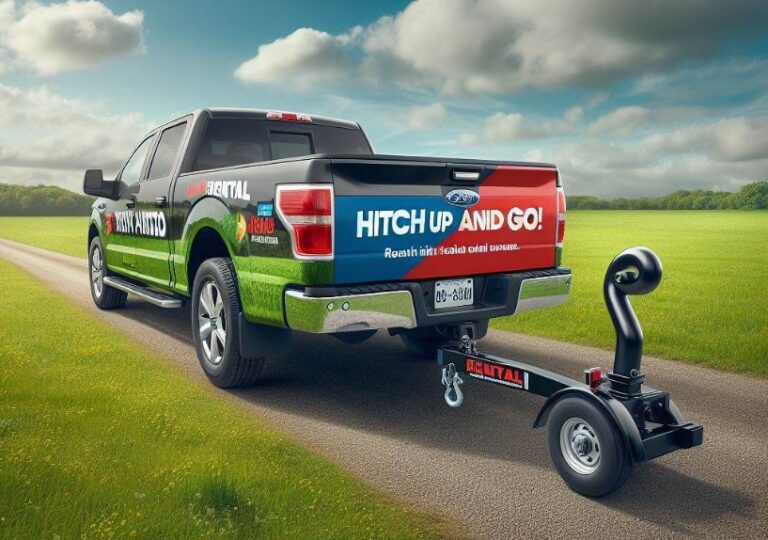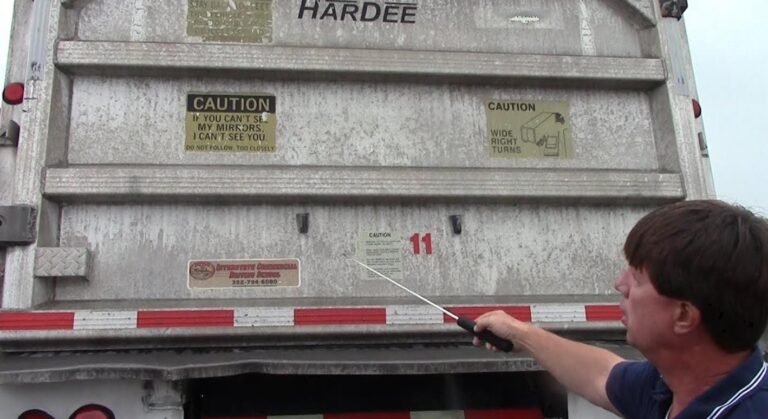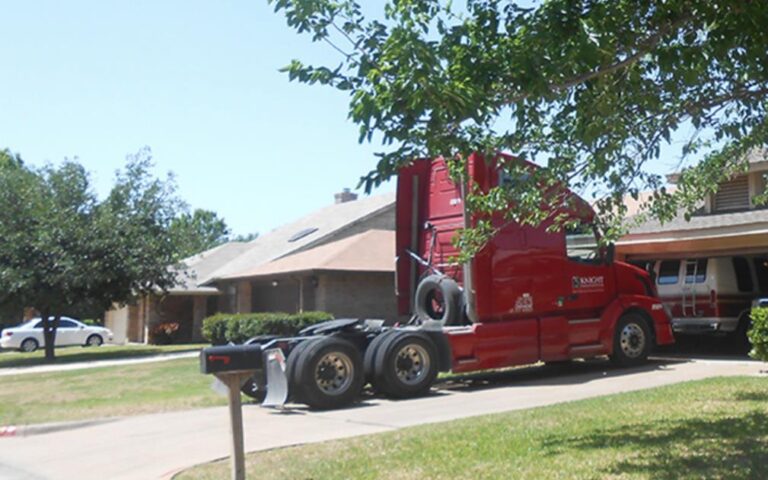How Much Weight Can A Garbage Truck Arm Lift? [Answered]
The question of How Much Weight Can A Garbage Truck Arm Lift? is not just a query of technical specification, but also a testament to the marvels of modern engineering and urban sanitation. Garbage trucks, as a crucial component of waste management systems, utilize mechanical arms for lifting and maneuvering waste containers. The lifting capacity of these arms is critical for efficient and safe refuse handling.
Key Takeaways
- Average Lifting Capacity: Most garbage truck arms can lift about 1,000 to 8,000 pounds.
- Variations: Different models and truck types have varying capacities.
- Safety and Efficiency: High lifting capacity ensures safer and more efficient waste management.
- Technological Innovations: Modern trucks feature advanced mechanisms for greater lifting power.
- Environmental Considerations: Heavier lifting capacities can lead to more efficient recycling and waste management.
How Much Weight Can A Garbage Truck Arm Lift?
Typically, a standard garbage truck arm can lift between 1,000 and 8,000 pounds. This range is quite broad due to the diverse designs and functionalities of garbage trucks. The lifting capacity directly influences the truck’s efficiency in handling heavy waste bins and bulky refuse.
Factors Influencing Lifting Capacity
- Truck Design: Different models are equipped with arms of varying strength and capability.
- Hydraulic Systems: The power of the hydraulic system plays a key role in determining lifting capacity.
- Material and Build: The construction materials and the design of the arm impact its lifting ability.
Importance of Lifting Capacity in Waste Management
The lifting capacity of a garbage truck’s arm is not just a matter of technical interest; it plays a pivotal role in urban sanitation and environmental management.
Efficiency and Safety
- Reduced Risk of Injury: Higher lifting capacities minimize the need for manual handling of waste.
- Increased Operational Efficiency: Trucks can handle larger and heavier bins, improving the speed and efficiency of waste collection.
Technological Innovations in Garbage Trucks
Modern garbage trucks are equipped with advanced technologies that enhance their lifting capabilities.
Advanced Hydraulic Systems
- Increased Power: Improved hydraulic systems offer greater lifting power.
- Durability: Enhanced systems are more durable and require less maintenance.
Environmental Impact of Garbage Truck Lifting Capacity
The capacity of a garbage truck’s arm has significant implications for environmental sustainability.
Efficient Waste Management
- Enhanced Recycling Capabilities: Trucks can handle larger recycling bins, promoting better recycling practices.
- Reduced Carbon Footprint: Efficient waste collection leads to fewer trips, reducing emissions.
Garbage Truck Arm Mechanics
Understanding the mechanics behind the lifting process provides insight into how these vehicles operate.
The Role of Hydraulics
- Power Source: Hydraulic systems are the primary power source for the lifting mechanism.
- Precision and Control: These systems allow for precise and controlled lifting and lowering of waste containers.
What Is The Lifting Capacity Of A Front Load Garbage Truck?
The lifting capacity of a front-load garbage truck, which is specifically designed for commercial and industrial waste, varies significantly based on the model and manufacturer. Typically, these trucks can lift between 6,000 to 10,000 pounds.
This higher capacity is necessary to handle large dumpsters and containers commonly used in commercial settings. The design of trucks, featuring a front-facing arm, allows for the efficient and easy lifting of heavier containers.
Front-load garbage trucks are vital in managing waste in business districts, apartment complexes, and other high-density areas. Their robust construction and powerful lifting mechanism makes them suitable for heavy-duty waste management tasks.
How Strong Are Garbage Truck Hydraulics?
The hydraulics in garbage trucks are exceptionally strong and are a key component in their operation. These hydraulic systems generate the force needed to lift heavy waste containers.
In a typical garbage truck, the hydraulic system can produce pressures up to 3,000 pounds per square inch (psi). This high-pressure capacity is essential for lifting heavy loads that can range from 1,000 to 8,000 pounds in residential trucks and up to 10,000 pounds in commercial front-load trucks.
The strength and efficiency of these hydraulic systems are crucial for the day-to-day functioning of garbage trucks, ensuring they can handle the heavy demands of waste collection. Regular maintenance of these systems is vital to sustain their high performance and prevent mechanical failures.
What Is The Arm On A Garbage Truck Called?
The arm on a garbage truck is commonly referred to as a “lift arm” or “automated side loader arm.” In front-load garbage trucks, this component is often called a “fork” due to its fork-like shape used to lift dumpsters.
The design and functionality of these arms vary depending on the type of garbage truck. For example, in side-loading trucks, the arms are designed to lift and empty residential bins, while front-loading trucks have arms capable of handling larger commercial dumpsters.
These arms are a critical component of modern garbage trucks, allowing for efficient, automated lifting and emptying of waste containers. Their design reflects the specific needs of the waste management process they are intended for, whether it’s residential curbside pickup or commercial waste removal.
Conclusion
In conclusion, the lifting capacity of a garbage truck arm, typically ranging from 1,000 to 8,000 pounds, is crucial for the efficiency and safety of waste management.
This capacity, influenced by truck design, hydraulic systems, and build quality, not only ensures operational efficacy but also contributes to environmental sustainability.
As we continue to innovate and improve waste management technologies, understanding and enhancing the capabilities of these vital vehicles remains a key focus.
Top FAQ’s
What training do operators need to handle different lifting capacities?
Operators require training to understand the capabilities and limitations of the garbage truck they are handling. This training includes safe operating practices, especially when dealing with varying lifting capacities and different types of waste containers.
How does weather impact the lifting capacity of garbage trucks?
Extreme weather conditions, like severe cold or heat, can impact the hydraulic systems of garbage trucks, potentially affecting lifting capacity. Regular maintenance is crucial to ensure consistent performance in various weather conditions.
Can garbage truck arms be upgraded to lift more weight?
Upgrading a garbage truck’s lifting capacity is possible but involves significant modifications to the hydraulic system and arm structure. However, such upgrades must comply with safety standards and vehicle regulations.
Do electric garbage trucks have different lifting capacities?
Electric garbage trucks, designed to be more environmentally friendly, usually have comparable lifting capacities to their diesel counterparts. The main difference lies in their propulsion system, not in the lifting mechanism.

Welcome to the exhilarating world of Matt Rex, a professional car racer turned renowned vehicle enthusiast. Immerse yourself in his captivating blog as he shares heart-pounding adventures, expert reviews, and valuable insights on cars, trucks, jets, and more. Fuel your passion for speed and discover the beauty of vehicles through Matt’s engaging stories and meticulous expertise. Join the ever-growing community of enthusiasts who find inspiration and expert advice in Matt Rex’s blog—a digital hub where the thrill of speed meets the pursuit of knowledge.







